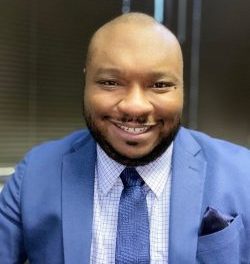
TAG Inc. Announces Record Growth in Q1 2021
April 6, 2021
How does your Health System Leak Funds?
May 11, 2021
Earlier this year, TAG held a P2P Virtual Healthcare Symposium featuring key healthcare systems leaders in the procure to pay (P2P) process. While this event covered many topics, the industry faced dealing with the COVID-19 pandemic, it only touched the surface of topics regarding crisis management, procurement struggles, and leadership.
We recently met up with one of our panelists, Sean Poellnitz, VP of Supply Chain at Mosaic Life Care, to take a deeper dive into some of the ideas and tactics he mentioned during the Symposium.
Interview with Sean Poellnitz
TAG: Throughout the symposium, you mentioned that your strategy to get through the challenges placed on you and your department due to the pandemic was based on resiliency and “becoming a true partner with your organization.” What is a resilient supply chain to you?
Sean Poellnitz: When you look at everything that happened during the crisis you didn’t have the full picture or the full information about much of anything, but you had to make decisions based on your most current information. For instance, I need to get from A to C, but I only see from A to B. That’s not something that’s in our DNA in healthcare where there are usually evidence-based decisions and those evidence-based decisions normally drive a final outcome.
So, we almost had to change the culture of the healthcare supply chain on the fly because organizationally we’re not used to saying, “Hey, we’re making a decision based on the data, but we know that the data is not really good.” As we make those decisions we have had to pivot or we might have to make a second or third decision to fully implement or drive a solution that covers all the variables that we can’t even see right now. So, it comes down to being agile. The point of being agile and resilient is that you may really put some time into creating a model or strategy and then, when you’re halfway through it or you get to phase one, you have to totally shift things around. So, its speed, agility, and the ability to make real-time adjustments that just didn’t happen historically within the healthcare supply chain culture. We were making decisions that we would implement for three or five years and now we’re saying “let’s make this decision based on what’s going on this week.”
TAG: Do you think that real-time decision-making is what the future of the healthcare supply chain looks like moving forward?
SP: That’s a good question. I think we’ve had the opportunity to get our staff exposed to being more flexible and working “with the gray.” I think that there are going to be consistent crises that continue to come up. Just look at Texas. Just two weeks ago, much of the state was in crisis due to never-before-seen cold weather and energy outages; people were dying because of this, with the freezing temperatures and no access to food. So, I think there will be a consistent theme moving forward where healthcare will have to make decisions in crisis or be “crisis-ready.”
However, the benefit of that is that supply chain will have to remain close to operations. People think about [supply chain] first when a crisis hits, so what has happened is that supply chain had to be a better business partner for the long term. The past year has really hastened that, it helped us to eliminate the formal red tape and helped us to get down to grassroots tactics.
TAG: Let’s expand on that a bit. You brought up being a partner with operations several times; so, what does a true partnership mean to you?
SP: We had the opportunity to not only partner with operations, but also partner with the supplier community. From the suppliers we needed to know what was going on in Malaysia, China, India, and more; we needed to know what the international risks were and what risks could arise as they got our products to the US – especially with the volume, demand, and stress on trucking and logistics. We had to have transparent conversations that weren’t about price. It was about doing the right thing for the community. It was often about multiple suppliers working together to help us get orders and meet our needs.
When you talk about “what does a true partnership look like” I think for internal and external relationships at any organization there are really four aspects that are key.
-
- One is the ability to be transparent without penalty. We don’t get anything done if we cannot be transparent. We have to say, “Here are the facts; Here’s the data; Here’s what’s working; Here’s the challenge; Here’s the opportunity.” I think a true partnership is having full transparency without penalty.
- The next thing is understanding the value of the relationships. The value of relationships is not necessarily what people do as a job every day. The value of the relationship might be, for example, working with McKesson and buying this product from them, but McKesson’s value during the pandemic was to be able to tell me globally what’s going on – what’s happening to their factories, what’s happening to their sub-suppliers, what’s happening to the raw materials. Their value came when all of a sudden, I needed some supplier partner that had global intelligence and could help me start to plan and forecast risk. So sometimes the value is not necessarily about the current exchange or your everyday business exchange, but it’s about understanding what you and your suppliers do well. So, for example, there are companies like TAG right now saying let’s create this shared business intelligence because there is some value in understanding the provider’s side – how you guys look at things, how you build strategy, how you think. Because the more you understand the provider, the better you can build that partnership. So, it’s about stepping back and valuing the relationship and valuing that “if we do these forums and these venues, we can start to create some intelligence of the market and start saying this is what we think our strategy will influence, and how does that translate in real life.”
-
- The third point is understanding that it’s a long game. We don’t win on every contract or every phone call, but you have to approach each other saying I want something that is sustainable, and I would rather take the right steps at the right time to build that relationship. It’s not about getting a quick win, it’s about building a relationship and when you have something with someone that is long-standing, there is a certain way that you treat them. There’s a certain way that you approach them. Just like in everyday life – when you build a long-term relationship with a car mechanic, they will typically tell you “this is what needs to get fixed right now and this is what you can wait on.” It’s because they understand the long-term value of the relationship. You end up returning to them because you know they gave you the real information and gained your trust.
TAG: Great points that really translate to any health organization’s Supply Chain. Let’s now focus a bit on procurement processes. During the symposium, you spoke about how your success in getting through the pandemic lied around speeding up processes or bypassing steps in a process to be able to make real-time decisions. Can you elaborate on that?
SP: I think our sourcing strategy had to have an inherent backup plan, which is not normal for healthcare. In healthcare most of the time I call you and say “hey I need new gloves,” I send you the purchase order, and then I get the gloves. But all of a sudden, the market had risks, and we didn’t know if that was going to happen. We needed a way to craft our order so that we had three suppliers who were bringing us gloves because there was a chance that one of them if not two of them may have had backorders or delays. So, you may have one supplier say, “I have a backorder,” and another says, “it’s in Chicago, it’s at the port, I can’t get it.” We had to source in a way that would assume risk, which is a good way to execute business. If we assume the processes work then we set ourselves up for failure. What we tried to do was source in a way where we would split up the business and have multiple parties to give us supplies of key product, because we could not be for certain that we were going to get all of the supplies as planned. We had so many examples of this. We had trucks that had accidents. We had a driver who was robbed. We’ve had so many things happen that you don’t normally see that if we would have had all our eggs in one basket we would have been in trouble.
There was such immense pressure on the supply chain executive to pull off these strategies and be able to mitigate risk. It’s like we almost just made magic happen because we, fortunately, had supplies here every day. There was not one supply shortage. We helped the whole community, but that came at 24/7 sourcing. That came at establishing a host of new relationships, and we had to figure out a process to qualify these suppliers pretty quickly. There were a lot of scams out there in the marketplace. There were just a lot of things happening to where our everyday sourcing strategy got blown up. We had to be resilient.
TAG: Speaking of scams, as an industry, healthcare saw a lot of fraud and price gouging during the onslaught of the pandemic when demand was greatly heightened. Did Mosaic plan or experience any of this?
SP: Price gouging is always interesting. As a matter of fact [Sean starts typing away on his computer], I have a really good example of that. When you look at PE and what supply chains had to do to make it work, it became scary quickly. So, let’s look at earloop masks. At some point, they started to get toward $.70 each or more. Pre-COVID they were $.03 apiece. Now that market is starting to come back down and they’re at about $.16.
When you look at the N-95s, that market got crazy. Pre-COVID, they were about $.43 a mask. After COVID, they were running at $5, $6, all the way up to $9 a mask. It was ridiculous.
You look at gloves, pre-COVID, that were $.03 each and then ran to over $.16.
You look at isolation gowns. Your pre-COVID price was around $.37 each – and these are gowns that you are using thousands of a day. You look at COVID times and they were going for $8-10 apiece if not more. Now they’ve bounced back to around $1.
But these are some real scenarios that you had to figure out. How do you source? How do you lock in prices? How do you navigate this price risk? It was challenging – and again it came down to being resilient, being agile, and making quick decisions while figuring out how to position your health system. In a way, you’re doing real live RFPs on the fly to try to get in the marketplace and source. Even after you source it, if this is a new supplier, what’s the quality going to look like?
I just so happened to have a network of amazing suppliers and peers. All we had to do was communicate and talk to each other, and that’s how we would pre-qualify them. Saying, “I’ve used them before or I’ve seen this material before.” It was literally like you almost kind of went to the stone age where there wasn’t internet access and research available. It was about picking up the phone and having conversations and having good ole relationships for people to vouch and say, “this is a good supplier.” It was quite an interesting experience. You know, we look at now, how we’re going towards AI – and even today when a system breaks down it’s still about having those good relationships.
TAG: This conversation about focusing on good relationships makes for a great segue into our next question. During the symposium, you touched on how your leadership philosophy flows around self-awareness, relationships, and perceptions. How did you develop this philosophy and how does it work into your everyday role?
SP: My leadership philosophy is what is needed right now as far as self-awareness, managing relationships, and managing perception. It’s like when a challenge came, not only did we have to respond, but we were also going to start to show the grit, sustenance, and context of the leaders.
Have we built our leaders to be able to take on this much change? Have we built our leaders to be able to take on so much uncertainty? And how do they respond under pressure?
Consistently it’s not just a challenge, but consistently the new world is showing us that there is a gap between the classroom education with the textbook and the ability to have mentors and be a structure where you get exposure to where we work on the leadership pipeline. Because that’s our future, and we don’t spend enough time there. You hear all these different books on leadership and on different concepts, but there has to be a core that you must work on before you can absorb that material.
This new kind of series (Leadership 365) that I created is focused on getting team members and others to be self-aware leaders. You must value your relationships, understand the power of relationships, and understand the influence of relationships. And then you are a person that understands perception both ways – about how your perception influences your approach; how other’s perceptions influence how they see you. If we can consistently get you to work on that core, we can start to position you to be the best version of yourself. We start to position you to take on more responsibility, more accountability, to be ready for any opportunity that comes up. Because of those core principles, I’m excited about the program, and I think right now the world is ready for it. The world is ready for us to position people for success and for us to have those real conversations because success is about your whole life – it does not just work, but preparing future leaders at the individual level is something we all can benefit from.
Meet Sean Poellnitz

Sean Poellnitz is Vice President Supply Chain at Mosaic Life Care. In his current role, Sean leads all supply chain functions, including materials management, Biomed, logistics, fleet, sourcing, GPO Affiliate Program, and procurement activities across the regional health system. Formerly Sean was Senior Director Supply Chain & Ancillary Services at USMD, a United Health Group Company for the Dallas Market.
Before the United Health Group, Sean was a system-level Director of contracting and resource utilization for CHRISTUS Health, an international Catholic, faith-based, not-for-profit health system comprised of almost 350 services and facilities, including more than 60 hospitals and long-term care facilities.
Before his leadership role at CHRISTUS Health, Sean held various leadership positions for CHI Health, Raytheon, Southern California Regional Rail Authority, and Union Pacific Railroad.
Currently, he serves on the Executive Advisory Council for the Missouri Western Craig School of Business.
Before entering the healthcare industry, he was a member of the American Public Transportation Association Procurement and Materials Management Committee and certified in Public Transit Procurement by the National Transit Institute.
As a part of his community leadership, Sean served as past President of, Board of Directors for FARMS, a non-profit organization serving rural farmers in Alabama, Georgia, and the Carolinas.
Sean has contributed to articles in “The Journal of Healthcare Contracting” and other healthcare magazines. He most recently spoke at the following events:
- 2021 P2P Symposium – TAG Inc.
- 2019 Speaker IDN Summit
- 2018 ECRI Institute’s Value Analysis Roadshow
- 2017 Markets IDN Insights West (Amazon Healthcare Summit)
- 2017 Health Connect Partners
- 2017 Speaker IDN Summit
- 2017 Speaker ACE Summit
- 2014 MedAssets Supply Chain Provider University Graduate


